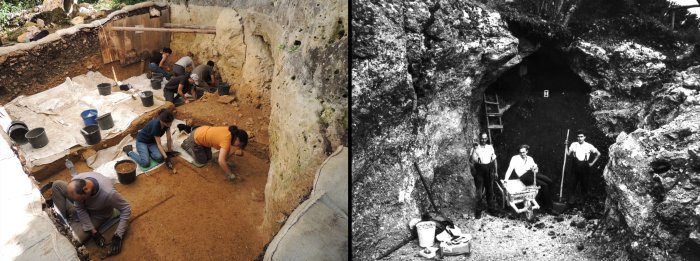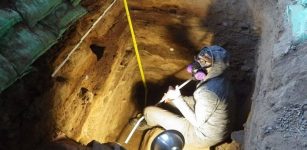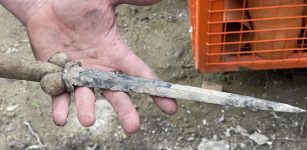Ice Age People Returned To Central Europe Much Earlier Than Previously Thought
Jan Bartek - AncientPages.com - Recent research has revealed new insights into the repopulation of central Europe following the last Ice Age. The study indicates that human resettlement occurred approximately 3,000 years earlier than previously believed.
The last Ice Age, which created inhospitable conditions across much of Europe, lasted from approximately 27,000 to 19,000 years ago. Until now, archaeologists had estimated that people returned to the Swabian Jura region in southern Germany around 16,500 years ago.
Credit: Adobe Stock - Iva
However, new evidence from two archaeological sites in the Lone Valley has challenged this timeline. The data suggests that modern humans were present in the area as early as 19,500 years ago, leaving behind traces of habitation. This discovery significantly alters our understanding of post-Ice Age migration patterns in central Europe.
These findings highlight the importance of ongoing archaeological research in refining our knowledge of prehistoric human movements and adaptations to changing climatic conditions.
Vogelherd cave underwent its initial excavation in 1931, conducted by Gustav Riek from the University of Tübingen. Due to time constraints, the excavation process was expedited, resulting in a lack of systematic documentation of the layers. Subsequent excavations were performed by Professor Nicholas Conard and his team from the University of Tübingen.
These later efforts included re-examining the overburden from the original 1931 excavation, which provided additional insights into the site's archaeological significance.
The Langmahdhalde (left) and Vogelherd Cave (right) sites. Credit: University of Tübingen
"The site is primarily known for its small figurines from the Aurignacian culture, which was prevalent around 42,000 to 35,000 years ago," says Benjamin Schürch from the University of Tübingen. "But there are also traces of the Magdalenian period, an archaeological cultural stage around 19,000 to 14,000 years ago with stone tools used for working hide and antler, as well as spearheads made of antler."
The Langmahdhalde rock shelter is located approximately 2 kilometers from the Vogelherd Cave. Excavations at this site were conducted from 2016 to 2024 under the supervision of Conard, with meticulous documentation of the layers.
The research team employed radiocarbon dating techniques on two sets of samples: animal remains from the Vogelherd cave that showed evidence of human manipulation and organic material from the Langmahdhalde site found in direct association with Magdalenian stone tools.
Radiocarbon dating is based on the principle that carbon-14, an isotope in organic materials, decays at a known and constant rate. By measuring the proportion of carbon-14 remaining in a sample, scientists can determine its age. This method relies on the predictable decay of organically bound carbon-14, allowing researchers to calculate the age of the artifacts with considerable accuracy.
Organic projectiles from the Vogelherd cave—left: broken spearhead with double beveled base, right: barbed spearhead. Credit: B. Schürch
The researchers conducted thorough analyses of cultural artifacts at each excavation site, focusing on the areas surrounding the dated findings. In the Vogelherd cave, they examined spearheads crafted from antler and stone, characteristic of the Magdalenian period. Additionally, at the Langmahdhalde site, the team studied microfauna remains, which provided valuable insights into the regional climate approximately 19,000 years ago.
"The oldest of these traces left by humans were dated to around 19,500 years ago in the Vogelherd cave. At the Langmahdhalde site, people appear to have stayed for the first time after the Ice Age between 17,900 and 17,000 years ago," Schürch explains.
See also: More Archaeology News
"As the sites are so close together geographically, we were able to correlate the more extensive finds from the Vogelherd with the more precisely documented sequence of layers at the Langmahdhalde. This was the only way we could gain a more comprehensive picture," says Gillian Wong.
The researcher added that although modern humans had repopulated the Swabian Jura in isolated cases at the end of the Ice Age, "they only settled permanently in the region again around 16,500 years ago."
The study was published in the journal Archaeological Science: Reports
Written by Jan Bartek - AncientPages.com Staff Writer























